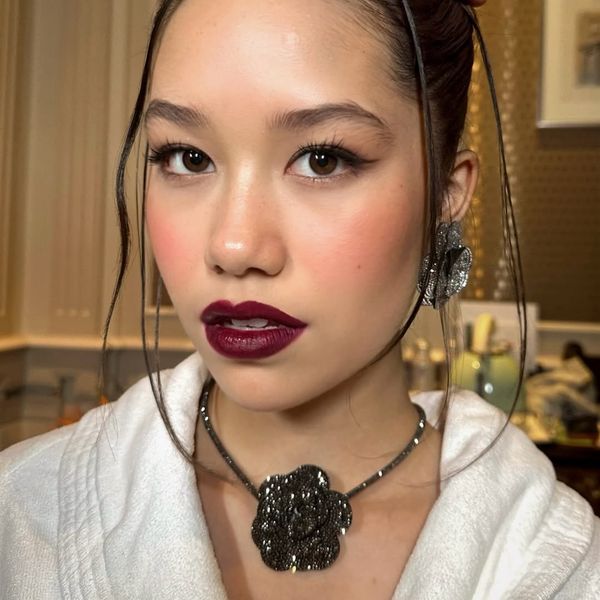This 20-Minute Treatment Can Drastically Change Your Face
Is chin filler the new lunch-time facelift?

When it comes to dermal fillers, there are certain injection sites that are well-known: the lips and cheeks. However, a new treatment is currently gaining buzz, and you probably haven’t heard about it yet: chin filler. So, why is everyone suddenly so obsessed with the chin? Well, last year, Juvéderm Voluma XC received FDA approval for use in the chin. “On a practice level, we’ve seen a huge uptick in this area, and I think a big part of that is social media,” says Gabrielle Garritano, a board-certified, New York–licensed physician assistant and the CEO and founder of Ject. “People are posting before and afters of the area and it’s driving a huge amount of interest.” Here’s another reason the treatment is so popular: It’s a non-invasive method that has an overall balancing effect on the face, says Garritano. So, how exactly does it work? Below, Garritano answers all of your questions.
What does the treatment involve?
It’s pretty self-explanatory: The treatment involves filler being injected into the chin to subtly change the shape of the area, resulting in a more defined profile. According to Garritano, the aesthetic facial “goal” for some is to achieve an upside triangle where the cheeks would be the base and the chin would be the point of the triangle.
“As we age, we’ve seen statistically that the triangle starts to flip, so we lose the cheekbones and the nose becomes the point rather than the chin,” she says. “What we’re trying to do here is recreate that triangle by looking at where and how we can give the face a more balanced look.”
It’s also about playing with your face’s natural light and shadows. “People have been doing this with makeup for years when it comes to looking at the lights and shadows of the face,” Garritano says. “And now we’re able to do that with dermal fillers. If someone has shadows under their eyes or along their jawline, they might come in thinking that they need under-eye filler when it might be their cheekbone or chin that’s causing that shadow to appear,” she adds.
What type of filler is used?
Juvéderm Voluma XC is an ideal filler for the chin because you want something that’s not quite as moldable, says Garritano. “You want a filler that adds both definition and lift to the area. In my opinion, it’s the best filler on the market.”
Who’s an ideal candidate for chin filler?
Rather than just looking at the age of the patient, Garritano looks at the anatomy and genetic factors like if, for example, you were born with less bone in that area. “There might be someone in their late 20s or early 30s who’s a good candidate because they lack a defined chin or jawline and they want to change that,” she says.
Is there any downtime involved?
Because it’s a non-surgical treatment, there’s very minimal to no downtime, says Garritano. The treatment takes less than 20 minutes and most patients deal with only a little bit of bruising or swelling. Prior to chin filler, if you wanted to change the look of your jaw, you’d have to get an implant, which involves a week of downtime, minimum, and could result in swelling that takes several weeks to subside.
How long does it last?
This really depends on how much filler you have injected in the area. “One syringe of filler is just 1/5 of a teaspoon. If you’re just doing a little drop in the area, it’ll last you around six months before it starts to metabolize,” says Garritano. “Just like we lose hyaluronic acid in the cells in our body, you’ll start to lose some of that filler. But it’s different for everyone because some people metabolize things differently than others,” she adds.
And in studies where they’ve seen that filler lasts much longer than we’ve anticipated, Garritano believes it’s because the patients in the study were older clients who’ve been getting fillers in the same area for many, many years versus a patient who comes in one time and gets injected once in that area.
Photo: Courtesy of Instagram/@jectnyc
Want more stories like this?
The Secret to Scoring a Firm Jawline
If You’ve Never Gotten Filler, Here’s the Deal
How an Injectable Neurotoxin Changed the Face of Aging




